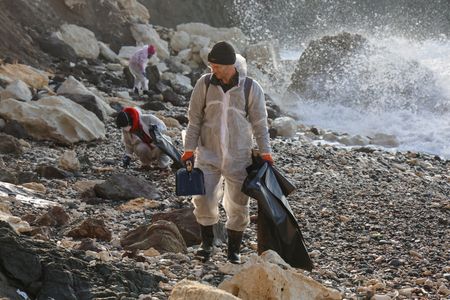(Reuters) -Russia said on Monday that 63 Russian soldiers had been killed in a Ukrainian New Year’s Eve attack on their quarters, triggering furious criticism of the military leadership from lawmakers and pro-war bloggers.
Footage posted online showed a building purported to be a vocational college in Makiivka, a city in the Russian-controlled part of Ukraine’s Donetsk province, reduced to rubble.
Daniil Bezsonov, a senior Russian-backed regional official, said the college had been hit by U.S.-made HIMARS rockets around midnight, just as people would have been celebrating the start of the New Year against the backdrop of a televised speech by President Vladimir Putin.
Russia’s Defence Ministry acknowledged the attack only in the final paragraph of a 528-word daily roundup, more than 36 hours later.
Even then, it did not address some of the allegations made by pro-war bloggers, who said casualties were far higher, and that the military had not only failed to hide its soldiers from the enemy but also stored ammunition close by.
Nationalist bloggers and chat-show hosts with hundreds of thousands of followers have had licence from the Kremlin to publicise the failings of the army – a potential criminal act under a law passed shortly after the invasion of Ukraine in February.
But the open fury extended on Monday to lawmakers.
Grigory Karasin, a member of the Russian Senate and former deputy foreign minister, not only demanded vengeance against Ukraine and the Western NATO alliance, whose members have been arming it, but also “an exacting internal analysis”.
Sergei Mironov, a legislator and former chairman of the Senate, Russia’s upper house, demanded criminal liability for the officials who had “allowed the concentration of military personnel in an unprotected building” and “all the higher authorities who did not provide the proper level of security”.
“Obviously neither intelligence nor counterintelligence nor air defence worked properly,” he said in a post on Telegram.
AMMUNITION STORE
Ukraine had alleged that 400 Russians had been killed, a number dismissed as an exaggeration by Russian bloggers.
A pro-war blogger known as Rybar, with more than a million subscribers on Telegram, said that, besides around 70 confirmed dead, more than 100 had been wounded. He said about 600 people had been in the building.
Igor Girkin, a former commander of pro-Russian troops in east Ukraine who has become a high-profile critic of Russia’s military, said on Telegram that there were “many hundreds” of dead and wounded.
Like Rybar, he said ammunition had been stored at the college, potentially accounting for its extreme devastation, and that the military’s presence had not been disguised.
Archangel Spetznaz Z, another Russian military blogger with more than 700,000 followers on Telegram, wrote:
“Who came up with the idea to place personnel in large numbers in one building, where even a fool understands that even if they hit with artillery, there will be many wounded or dead?”
Reuters was unable to verify the battlefield accounts, but did confirm the location of the video from the buildings and road layout seen in the footage, although not the date that it was filmed.
A source close to the Russian-installed Donetsk leadership told Reuters the building had housed some of the 300,000 or more soldiers mobilised since September.
Many have already been sent to the front to bolster a 10-month-old campaign in which Russia has been driven out of large swathes of the Ukrainian territory it had seized, and been forced to replace many of its senior commanders.
The fact that so many of the dead were not volunteer career soldiers was likely to fuel the anger of relatives and some of the ordinary Russians whom Putin asked in his New Year address for support and sacrifices in the months ahead.
The news outlet 63.Ru, based in Samara, quoted regional governor Dmitry Azarov as saying some of those killed were from his region and advising concerned relatives to contact local recruitment centres for information.
(Reporting by Reuters; Writing by Lidia Kelly, Ron Popeski and Kevin Liffey;Editing by Gareth Jones and Angus MacSwan)










